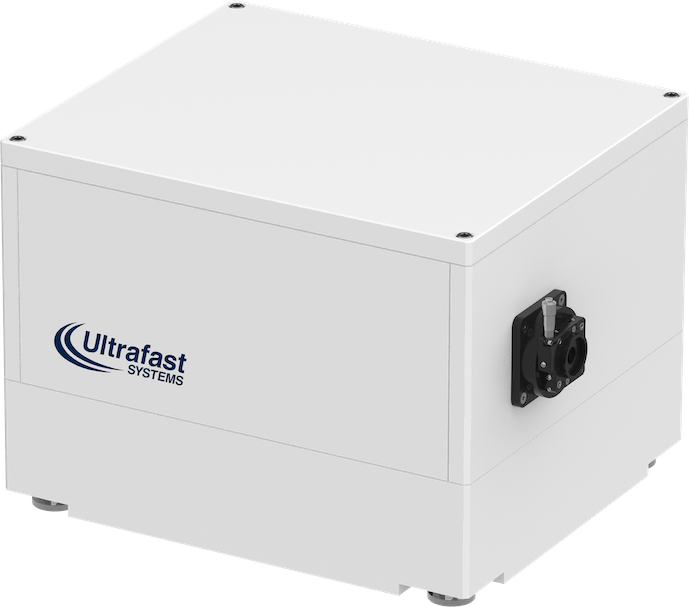
HALCYONE Pico is an all-in-one Fluorescence Spectrometer with Time-Correlated Single Photon Counting. It allows for measuring fluorescence decays with picosecond time resolution. This is a complete setup, including a built-in excitation light source, a monochromator, detectors, and all necessary optics and electronics.
In Time-Correlated Single Photon Counting, the emitted photons are registered directly, therefore the spectral range is determined by the detector. The choice of a detector depends on the required wavelength and time resolution. We offer the following TCSPC detector options:
Detector
IRF (FWHM)
Spectral Range
Photomultiplier (HA-PMT)
250 ps
230 – 700 nm
Hybrid Photomultiplier (HA-PMT-50)
50 ps
220 – 650 nm
Avalanche Photodiode (HA-MPD)
50-200 ps (wavelength dependent)
400 – 900 nm
Photomultiplier (TE cooled) (HA-PMT-NIR)
400 ps
950 – 1700 nm
To maximize the upconverted signal intensity the non-linear crystal needs to be rotated to a certain angle, depending on the fluorescence wavelength. HALCYONE automatically adjusts this angle during the experiment, so no input from the user is needed.
Halcyone Pico utilizes an imaging monochromator, which was designed for time-resolved spectrometry.
This monochromator features high spectral resolution and astigmatism-corrected design, optimal for multipixel array detectors. With the dual exit ports, this instrument can be used as a spectrograph as well as a monochromator.
The monochromator’s design (300 mm, F#6) matches the optics in the rest of the setup and maximizes the overall spectrometer performance.

The monochromator features a 4-grating turret with kinematic mounts for optimal wavelength coverage, optical throughput, and spectral resolution.
The UV-enhanced Al coatings on the monochromator mirrors ensure high efficiency of fluorescence collection.

As a complete solution, HALCYONE Pico has an integrated computer-controlled tunable excitation source. Additional (external) excitation sources can also be used.
Spectral range: 360-860 nm
Pulse duration: <150 ps
Repetition rate: 1-10 MHz
Bandwidth tunability: 3-100 nm
Average output power: 6 µW/nm @ 1MHz
Computer-controlled

Halcyone features versatile and user-friendly LabVIEW-based software for instrument control and data acquisition. The software allows for full experiment automation, so no input from the user is required for the whole experiment duration.
Supports a PMT detector with a computer-controlled monochromator.
Supports a CCD detector with a high throughput spectrograph.
Takes into account the pump and fluorescence wavelengths and automatically adjusts the computer controlled non-linear crystal’s angle.
Automated alignment of the optical delay line.
Computer controlled switching between UV, VIS, and NIR fluorescence spectral ranges.
Supports computer controlled translating sample holder.
Supports pump beam shutter.
Supports motorized filter wheel for automated pump intensity control.
Saves every individual kinetic scan, so if the experiment is aborted (due to laser fluctuations, power outages, etc.) all previous scans are not lost.
Threshold adjusted automatic probe intensity spike rejection – an advanced setting that collects data points again if the probe is not stable.
API (Application Programming Interface) for HALCYONE is provided for further experiment customization and integration with external applications.
Time-resolved fluorescence spectrometers are designed to measure the lifetime of the emissive excited state of a molecule. As a result of the photon absorption, the molecule passes from the ground state to an excited state. The reverse transition will occur at a rate specific to this chromophore. The lifetime of fluorescence is unique for each molecule and depends on the molecule’s environment. This property makes time-resolved spectrometry a powerful tool for studying processes that may involve:
Radiative relaxation (fluorescence)
Vibrational relaxation
Internal conversion
Energy transfer
Intersystem crossing (i.e. singlet to triplet transition)
Solvation
Conformational changes
Electron transfer to another molecule or the solvent
In a broader sense, HALCYONE can be used in:
Photophysics
Cell biology
Photochemistry
Materials science
Photobiology
Nanoscience
This site is protected by reCAPTCHA and the Google Privacy Policy and Terms of Service apply.
© 2002 – 2025 Ultrafast Systems, 8330 Consumer Ct, Sarasota, FL 34240, USA. All Rights Reserved.
An answer to your question might already be there.